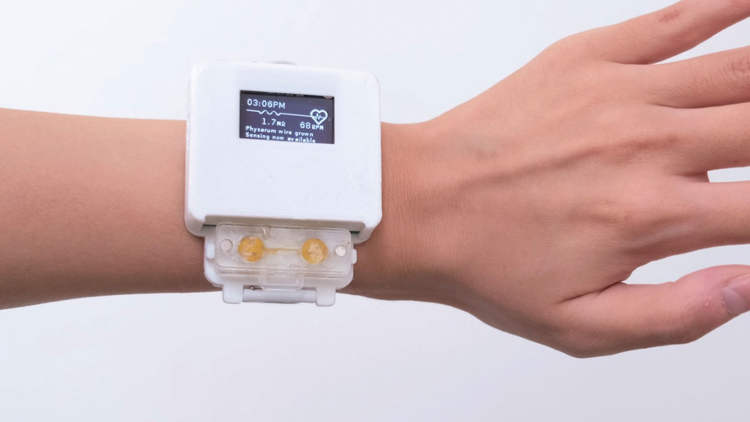In an attempt to explore the relationships people have with their modern accessories like smartphones and smartwatches, researchers recently created a smartwatch powered by a living organism.
Devices like smartphones, smartwatches, and laptops have become a part of our daily routine, and scientific experiments have shown that many people feel that they can’t function properly without them. Yet as a result of consumerism culture, most of us have no problem discarding our gadgets as soon as we can afford to buy new, more advanced ones, even if we don’t really need them. But what if there was a way to feel more attached to these gadgets, would that make us think twice before replacing them? Inspired by the Tamagochi, a Japanese toy that became an international phenomenon during the 1990s, scientists at Chicago University created a unique type of smartwatch that only functioned if the living organism inside of it was kept alive.
The Tamagochi was an egg-shaped device that allowed users to take care of a digital pet by feeding, training and disciplining it. If not given enough attention, the pet would die, and players would have to start over. It was immensely popular in the 1990s and early 2000s and is still available today. This toy was the original inspiration for a unique smartwatch where the digital pet was replaced by a living organism – a slime mold.

Photo: University of Chicago
The idea of the project was to use build the smartwatch around the slime mold, an electrically conducive single-cell organism. To keep the watch in working order, users would have to keep the mold alive. If the mold died, the device would cease to function.
Jasmine Lu and Pedro Lopes, the two University of Chicago scientists behind this intriguing smartwatch, wanted to see if bringing tech gadgets to life in a literal sense would change our relationships with them. They created an enclosure attached to the smartwatch and placed a species of slime mold known as Physarum polycephalum inside it. To enjoy one of the key functions of the accessory – heart rate monitoring – they would need to keep the mold alive by feeding and caring for it.
Here is exactly how it works – the slime mold is placed in one side of the enclosure and as it is fed with a mixture of water and oats it grows to the other side of the enclosure forming an electrical circuit that activates the heart rate monitor function. If the mold is ignored, it goes dormant and the circuit is cut off.

Photos: University of Chicago
Interestingly, users can forget about their pet slime mold for days, months, or even years, as it can be “revived” by resuming care for it. But scientists wanted to know if simply knowing that there is a living, dormant organism in there affected people’s relationship with the gadget.
“A lot of human-computer interaction research is motivated by making things easier to use and faster to use,” Lopes said. “But Jasmine thought there should be more friction; you should have to care for it and feed it every day, for the sake of just having to reflect on it. So, it’s like half art piece and half research paper.”
After testing the gadget, the scientists decided to conduct a small experiment so they gave five slime mold-powered smartwatches to five people for two weeks. Over the first week, participants were asked to feed the mold until it grew enough to activate the heart monitoring function, then, during the second week, they were asked to stop feeding the organism until it dried out. Throughout the experiment, they were asked to write their feelings about the gadget and answer some questions.
Results showed that people became significantly more attached to their smartwatches, some even naming them or asking other people to feed them when they couldn’t do it. Even more shocking were the reactions to the second phase of the experiment with participants expressing guilt or even grief at seeing their slime mold whithering away.
We’ll probably never see a commercial version of this slime mold-powered smartwatch, but that wasn’t the idea of this intriguing experiment. Scientists only wanted to emphasize the importance of emotional attachment and maybe even inspire gadget designers to create devices that inspire attachment and mutual benefit instead of generic tools meant solely for consumption.






